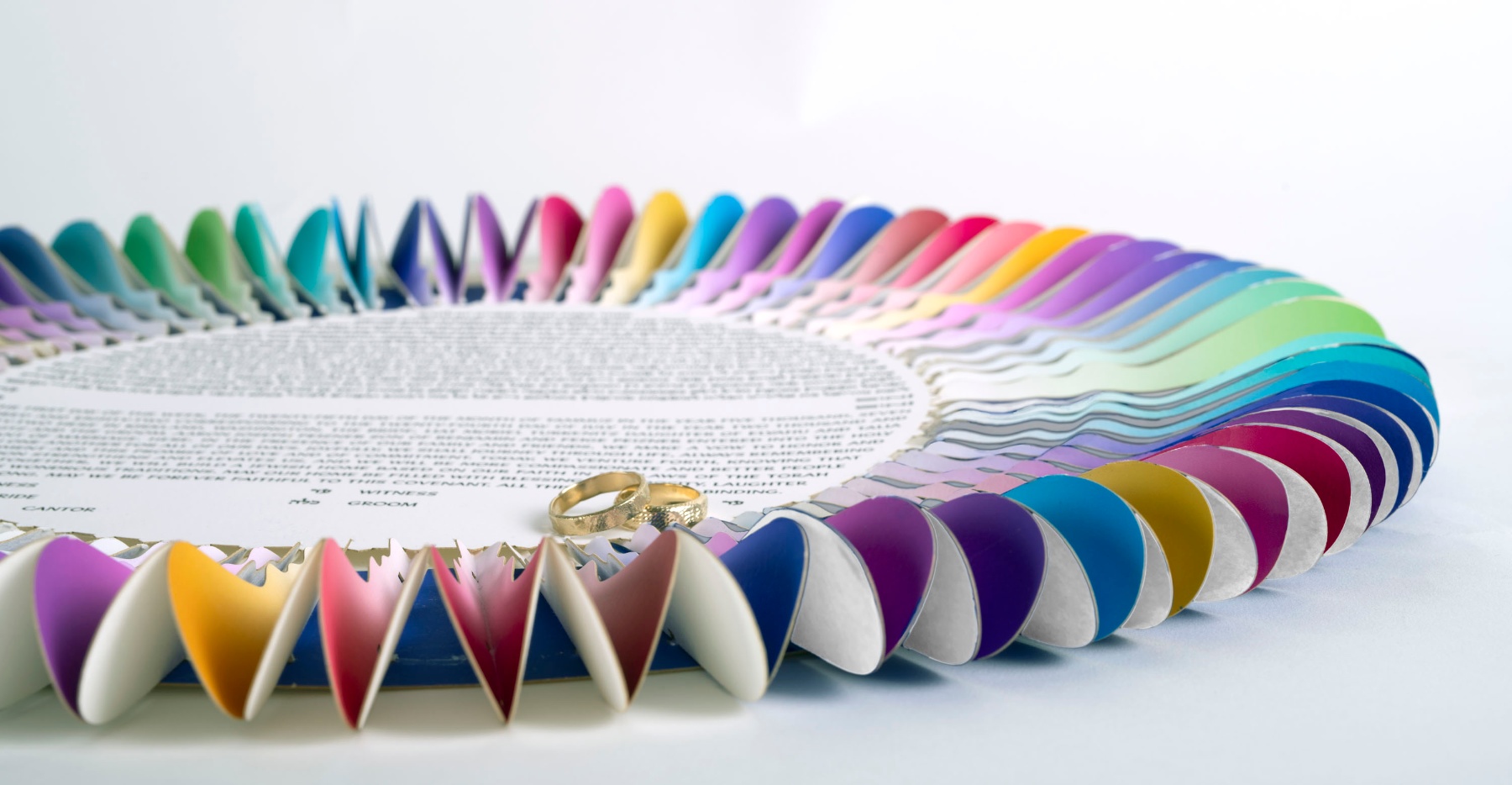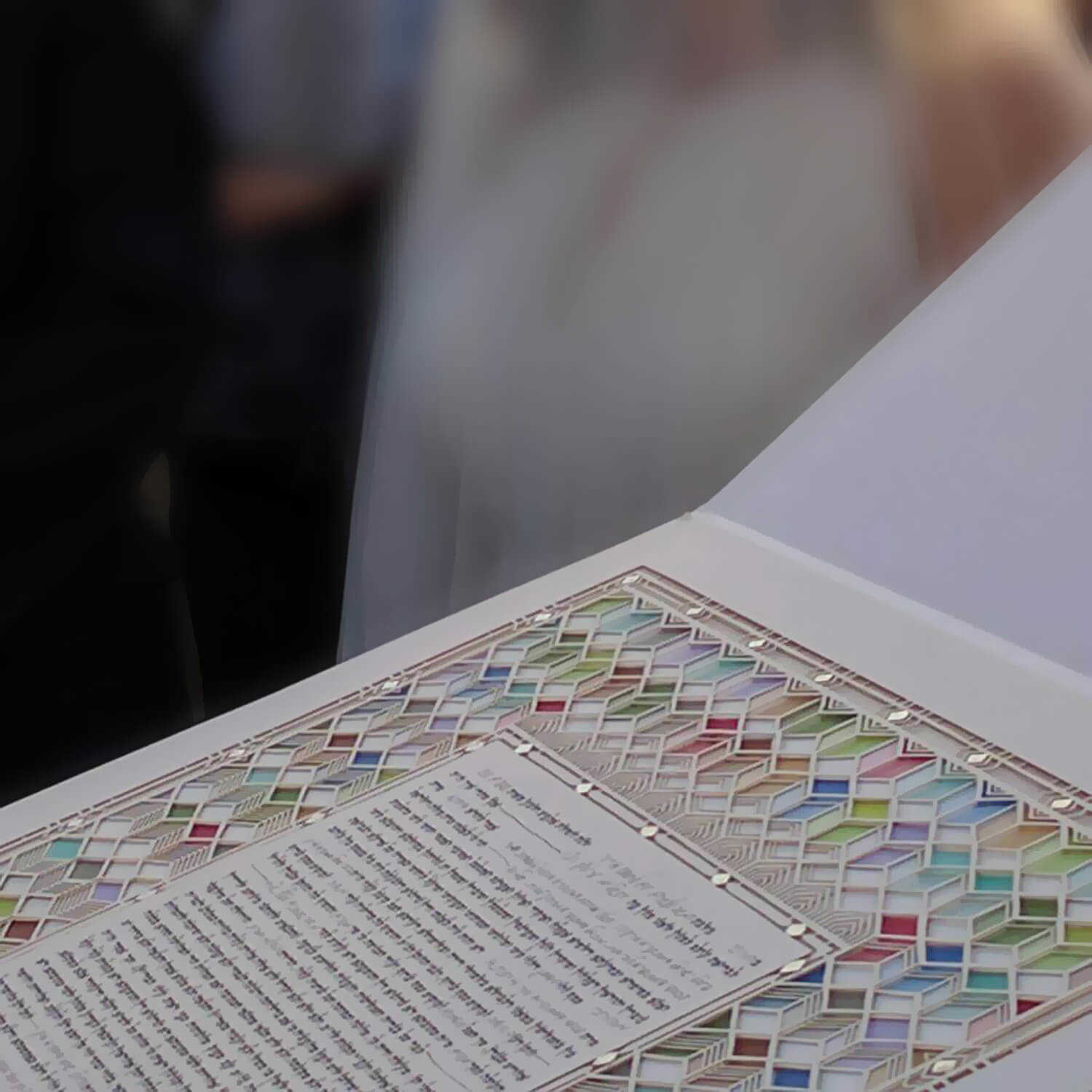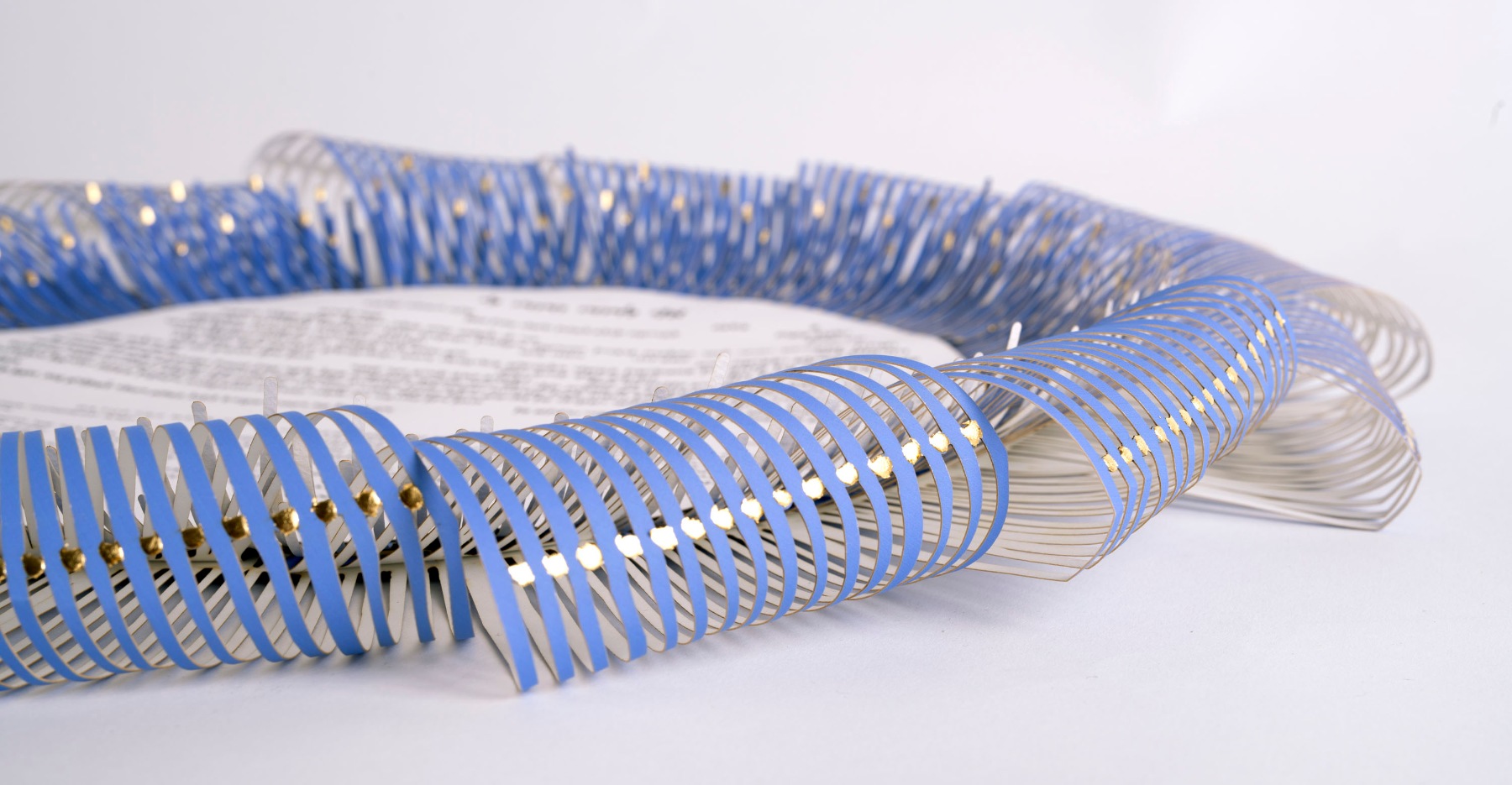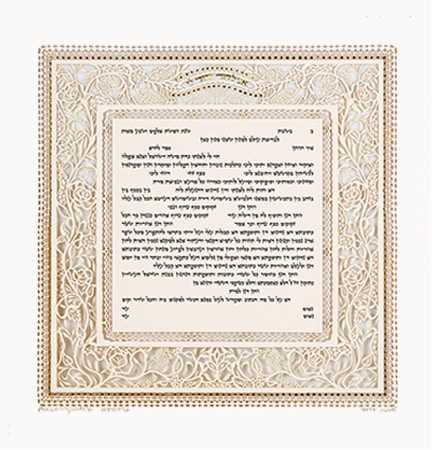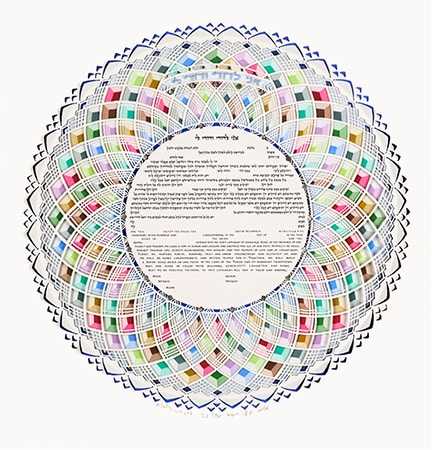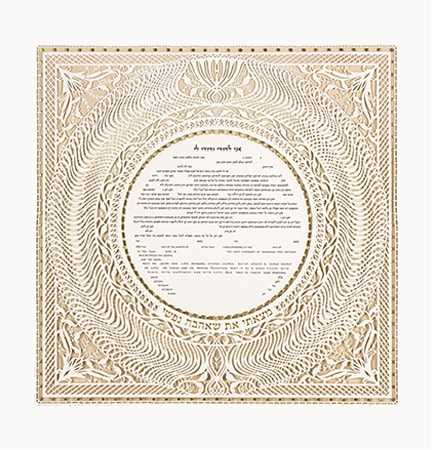Ketubah Art and Calligraphy: A Historical Perspective
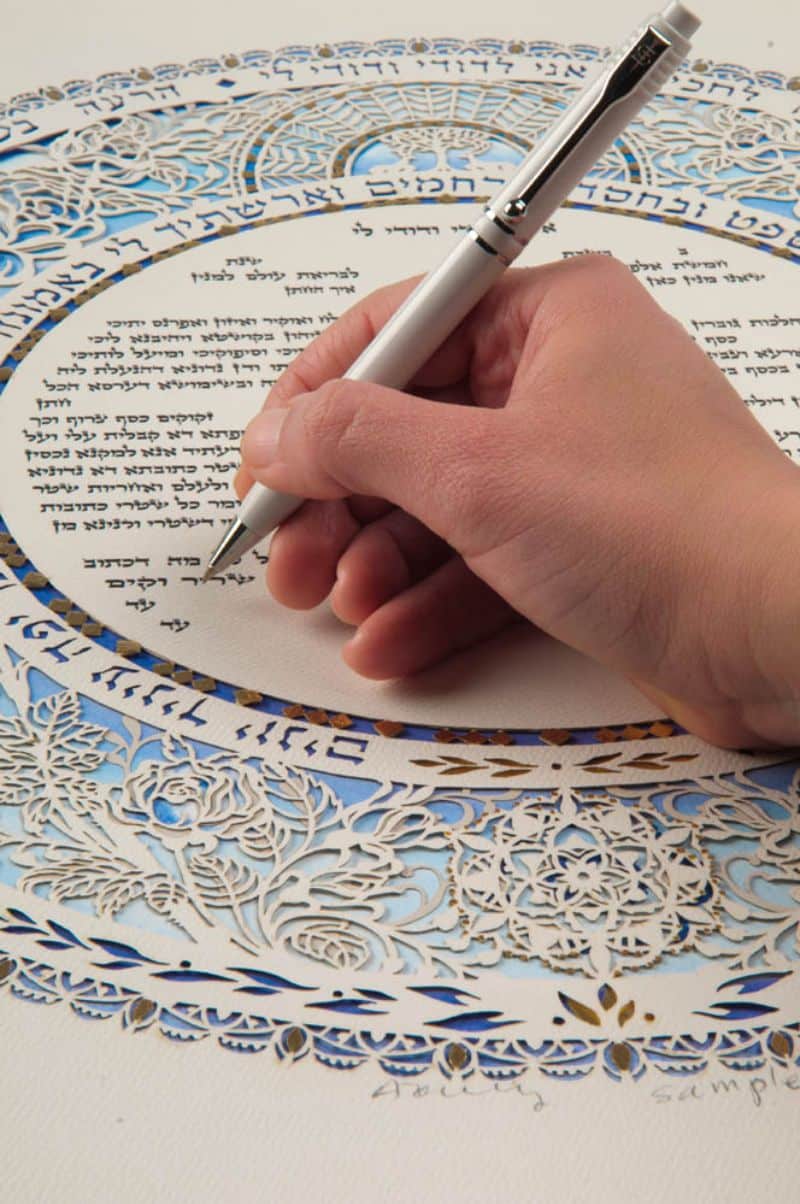
A Ketubah is not just a Jewish marriage contract, it’s a beautiful piece of art that carries deep cultural, legal, and symbolic weight. Traditionally, the Ketubah outlines the legal responsibilities of a husband to his wife, serving as a safeguard for the bride’s financial security. But over the centuries, it has evolved into so much more than a legal document. Today, Ketubahs are cherished pieces of Jewish art, crafted with care and creativity to capture the essence of love and commitment on a couple’s wedding day.
From the elaborate, gold-leafed designs of Renaissance Italy to the intricate geometric patterns inspired by Middle Eastern art, Ketubahs reflect a wide range of regional styles and artistic traditions. Modern ketubahs continue this legacy, blending old-world charm with contemporary art techniques, transforming them into personalized masterpieces that serve both as a legal document and a gorgeous gift to be treasured for generations.
In this article, we’ll dive into the rich history of Ketubah art and calligraphy, exploring how these unique pieces have grown from simple legal texts to extraordinary works of art. We’ll look at how different Jewish communities around the world have influenced Ketubah designs, from the symbolic motifs found in Eastern Europe to the vibrant, modern texts that speak to today’s couples. Along the way, we’ll uncover the enduring beauty and relevance of this timeless Jewish tradition.
The Beginnings of Ketubah Art: From Functional to Ornamental
In its earliest days, the Ketubah was a straightforward legal document—a no-frills contract meant to outline the obligations of a husband to his wife. Written in Aramaic, these early Ketubahs served a purely functional purpose: to ensure the wife’s financial security in the event of divorce or the husband’s death. They were, at their core, simple pieces of text with little to no embellishment—far from the beautiful ketubah designs we see today.
As Jewish communities began to thrive in different parts of the world, the Ketubah slowly started to transform from a mere legal document into a meaningful piece of art. This shift from functional to ornamental was influenced by several factors. With the rise in Jewish literacy and the development of Jewish art, there came a desire to create a visually appealing document that celebrated one of life’s most significant events: the wedding day. The Ketubah began to be viewed not just as a legal necessity but as a special piece of the wedding celebration—one that could also be a beautiful, artistic expression.
During the medieval period, we start to see the earliest examples of Ketubahs becoming more than just words on a page. Simple borders, decorative elements, and the first attempts at illustrated motifs began to appear, laying the groundwork for the more elaborate ketubah artwork that would emerge in the following centuries. These early designs, though modest, marked the beginning of a tradition that would see the Ketubah evolve into a stunning piece of artwork, a true reflection of the Jewish wedding and its rich cultural histories.
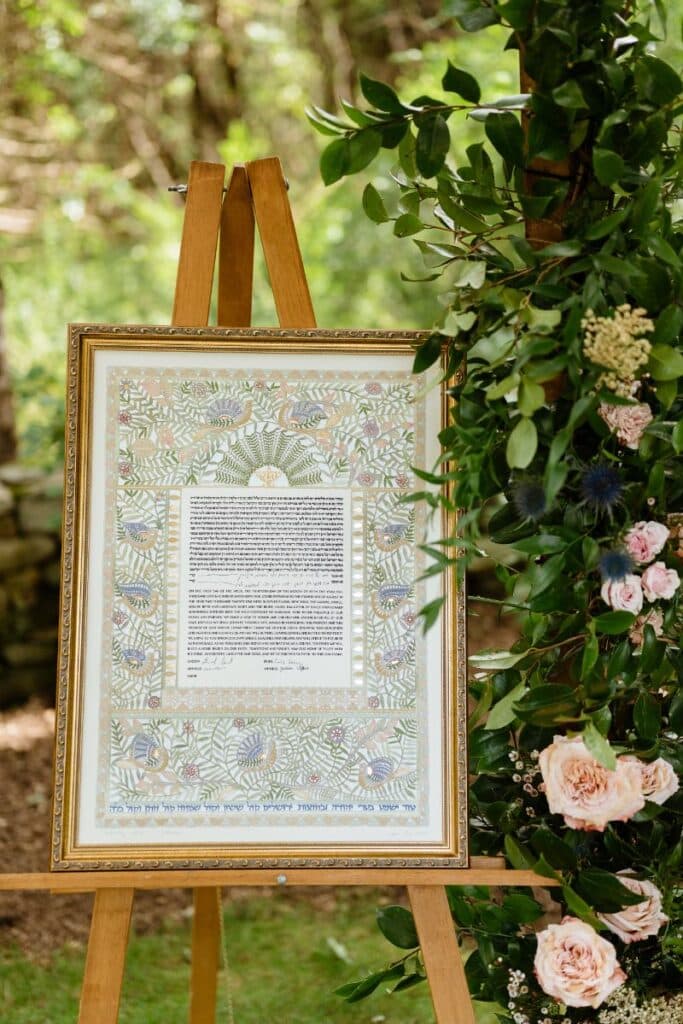
The Influence of Regional Styles on Ketubah Design
As Jewish communities spread across Europe, North Africa, the Middle East, and beyond, the art of the Ketubah began to reflect a rich tapestry of cultural influences. Each region brought its unique artistic flair, transforming the Ketubah into a vibrant piece of art that echoed local traditions and aesthetics. This resulted in a diverse range of Ketubah artwork, with each style telling its own story through color, design, and symbolism.
1. Italian Renaissance Influence
In Italy, particularly during the Renaissance, Ketubahs became exceptionally ornate. Inspired by the grand artistic trends of the time, Italian ketubahs evolved into beautiful pieces that were as much about aesthetic appeal as they were about documenting a marriage. These Ketubahs often featured intricate borders, floral motifs, and vivid scenes from the Bible or Jewish life, all executed in the elegant style of Renaissance art. The use of gold leaves and vibrant colors turned these documents into true masterpieces, marrying the legal with the artistic in a way that was both stunning and deeply meaningful. Today, the legacy of these early Italian designs continues to inspire modern ketubah artists who seek to blend traditional elements with contemporary sensibilities.
2. Middle Eastern and Sephardic Traditions
In the Middle East and among Sephardic Jewish communities, the design of the Ketubah was heavily influenced by Islamic art. Here, Ketubahs became a canvas for intricate geometric patterns, arabesques, and elaborate calligraphy. These designs, avoiding figural representation in favor of abstract forms, highlighted the harmony and beauty found in repeating patterns. The calligraphy itself, often flowing and interconnected, was as much a part of the artwork as the decorative elements surrounding it. The inclusion of these geometric and abstract designs in Ketubah art reflected a deep appreciation for the artistic traditions of the Islamic world, creating a cultural bridge between Jewish and Islamic art that is still admired today. Modern ketubahs often draw on these themes, combining them with modern texts to create a timeless fusion of styles.
3. Eastern European and Ashkenazi Traditions
In Eastern Europe, among Ashkenazi Jews, Ketubahs took on a different flavor, influenced by local folk art traditions. These Ketubahs were often more modest in decoration, emphasizing the text and its importance over elaborate illustrations. Yet, they were not without their charm. Many included symbolic elements such as animals, plants, or scenes from Jewish life, rendered in a naive or folk-art style that captured the spirit of the community. These designs often featured Hebrew texts that were both functional and symbolic, reinforcing the connection between the couple and their community. In modern times, there has been a resurgence of interest in these traditional ketubah themes, as couples look to honor their heritage while still creating a document that feels personal and unique.
Each of these regional styles contributed to the rich tapestry of Ketubah design, transforming the document from a simple contract into a meaningful piece of art that captures the cultural histories and traditions of Jewish life. Today’s ketubah artists continue to draw inspiration from these diverse influences, creating contemporary pieces that celebrate both the beauty of tradition and the innovation of modern art.
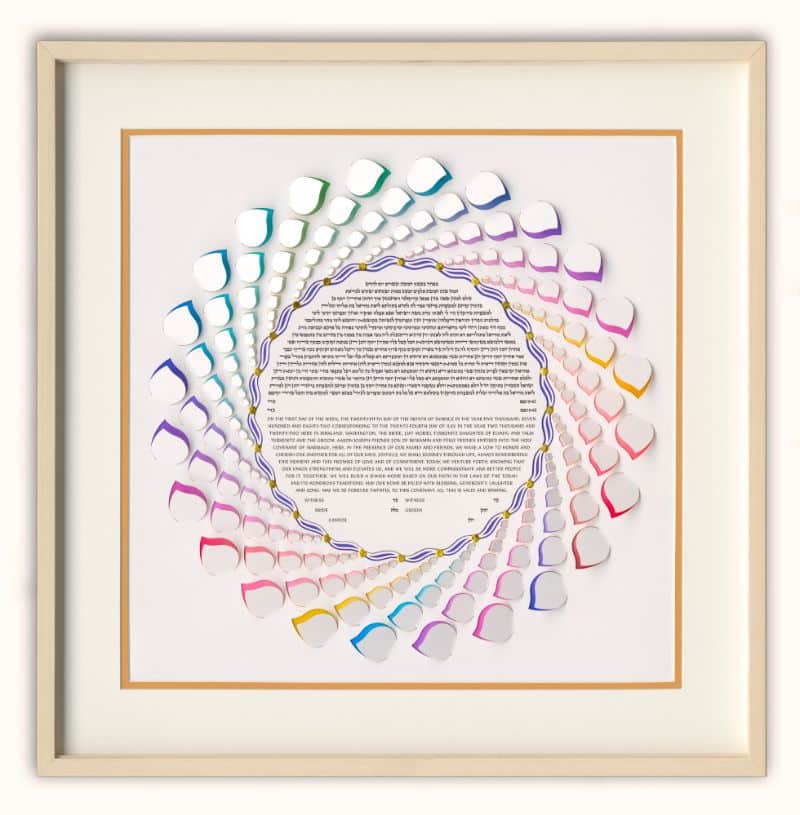
The Role of Calligraphy in Ketubah Art
Calligraphy has always been at the heart of Ketubah art, serving as both a functional element and an artistic expression. The way the text is written—its style, its flourishes, and even the type of script used—adds depth and meaning to the Ketubah, elevating it from a mere document to a cherished piece of artwork. For many Jewish artists, the calligraphy is as important as the visual elements, making the text itself a beautiful piece of art that reflects the sacredness of the marriage contract.
1. Hebrew Calligraphy and Its Symbolism
Hebrew calligraphy, with its rich tradition and deep symbolic meanings, plays a central role in Ketubah design. Each letter is more than just a character; it’s a symbol, crafted with intention and care to reflect the sanctity of the words it forms. In a Ketubah, the Hebrew text isn’t just a legal statement—it’s a spiritual declaration, beautifully rendered to honor the sacredness of the marriage vows. The elegance of the calligraphy transforms the Ketubah into an illuminated manuscript, where every stroke tells a story and every word carries weight. This emphasis on Hebrew texts ensures that each Ketubah is not only a legal document but also a spiritual and cultural artifact, deeply rooted in Jewish tradition.
2. Evolution of Calligraphic Styles
Over the centuries, the styles of calligraphy used in Ketubahs have evolved, shaped by both cultural influences and artistic innovation. In some regions, calligraphy became highly elaborate, with decorative flourishes and intricate ligatures that made each letter a work of art. In other regions, the focus was on clarity and readability, favoring simpler, more straightforward scripts. Yet, regardless of style, the calligraphy in a Ketubah always reflects the scribe’s skill, devotion, and deep understanding of the marriage covenant. This blend of art and craft is what makes each Ketubah unique—a custom piece that is as much about the artist’s expression as it is about the couple’s union.
3. Contemporary Approaches to Calligraphy
Today, many Ketubah artists are redefining what calligraphy means in the context of modern texts and digital art techniques. While some continue to use traditional hand-written methods, others are exploring digital tools to create precise and innovative designs. This fusion of old and new allows for a wide range of options, from classic Hebrew scripts to more contemporary styles that reflect the couple’s personal tastes. Despite the rise of digital technology, the demand for hand-crafted, personalized Ketubahs remains strong, with many couples seeking out acclaimed artists who can bring their unique vision to life. Whether through traditional techniques or modern approaches, the art of Ketubah calligraphy continues to thrive, blending the timeless beauty of Jewish tradition with the dynamic spirit of contemporary art.
Symbolism and Themes in Ketubah Art
Ketubah art is rich with symbolism, weaving together themes that reflect Jewish cultural histories, religious beliefs, and the shared values of the couple. From biblical imagery to protective motifs, the designs found in Ketubahs are more than just decorative—they’re deeply meaningful pieces that resonate with the spiritual and cultural significance of marriage in Jewish tradition. Each Ketubah is crafted not only as a legal document but also as a beautiful ketubah design, blending art and meaning in a way that creates a timeless tradition.
1. Biblical Themes and Imagery
Biblical themes are a central element in many Ketubah designs, connecting the couple’s union to the broader narrative of Jewish history and tradition. Scenes depicting the Garden of Eden, the Temple in Jerusalem, or renowned biblical couples like Abraham and Sarah are often found in traditional ketubahs. These images are not just for visual appeal; they serve as profound reminders of love, commitment, and divine blessing, making each Ketubah a cherished piece. This connection to biblical stories reinforces the cultural importance of the Ketubah as both a piece of artwork and a reflection of Jewish values, ensuring that it is a perfect ketubah for celebrating both personal and communal heritage.
2. Symbolic Motifs
Beyond biblical scenes, many Ketubahs feature symbolic motifs that carry specific meanings and enhance their status as a beautiful piece of art. For example, flowers and plants commonly symbolize fertility, growth, and the blossoming of new life together. Images of animals such as doves, lions, or even the mythical phoenix often represent peace, strength, and renewal. The use of geometric patterns, particularly popular in Sephardic and Middle Eastern Ketubahs, symbolizes the infinite and eternal nature of God’s creation. These patterns, blending both simplicity and complexity, reflect the dual nature of marriage—a union that is both deeply personal and universally significant, creating a ketubah artwork that resonates across generations.
3. The Hamsa and Other Protective Symbols
In many Ketubahs, especially those from North African and Middle Eastern traditions, protective symbols like the hamsa—a hand-shaped amulet believed to ward off the evil eye—are subtly woven into the design. The hamsa, alongside other protective motifs such as the Star of David or even elements of illuminated manuscripts, adds an additional layer of protection and blessing to the marriage. This blend of artistic beauty and spiritual symbolism ensures that the Ketubah is not just a document but a piece of art that reflects both personal beliefs and broader cultural traditions. Such elements make the Ketubah a meaningful piece that serves as both a spiritual shield and an expression of love.
4. Modern Interpretations of Traditional Symbols
Today’s Ketubah artists are not confined to traditional themes; they are also exploring modern interpretations of classic symbols, bringing new life to this ancient art form. While a traditional ketubah might feature biblical scenes or classic motifs, a modern ketubah might incorporate contemporary elements like digital art techniques or even modern texts that speak to the couple’s personal tastes and cultural backgrounds. This innovative approach allows for a wide range of options, from abstract art ketubahs to more minimalist designs, ensuring that every couple can find—or create—a custom ketubah that feels uniquely their own. Whether opting for a digital piece or a hand-painted watercolor ketubah, couples today are blending old-world charm with new-world innovation, ensuring their Ketubah remains a special piece that captures their unique love story.

The Revival of Ketubah Art in the Modern Era
The 20th and 21st centuries have witnessed a remarkable revival of Ketubah art, as contemporary artists and designers breathe new life into this timeless tradition. No longer confined to classic interpretations, today’s ketubahs are as diverse as the couples they represent, with modern ketubah artists pushing the boundaries of what a ketubah can be. From traditional techniques to digital innovations, the world of ketubah artwork has expanded, offering an assortment of options that cater to every taste, style, and cultural heritage.
1. Contemporary Ketubah Design Trends
Modern couples often seek ketubahs that reflect their unique personalities, cultural backgrounds, and shared values, leading to a surge in demand for custom-made ketubahs. Some prefer minimalist ketubahs with clean lines and simple motifs, while others opt for more elaborate designs that incorporate elements from various artistic movements. Popular contemporary designs include watercolor ketubahs, which offer a soft and romantic aesthetic, and lasercut ketubahs, which feature intricate, delicate patterns cut with precision. These contemporary pieces not only serve as a legal document but also as a stunning centerpiece on the wedding day, blending tradition with modern sensibilities.
2. Personalized Texts and Unique Vows
Beyond visual design, many modern ketubahs now feature personalized texts, allowing couples to write their own vows or choose language that resonates with their relationship. This trend has led to a wide range of ketubah texts, from traditional Aramaic or Hebrew to more contemporary English versions, including Reform ketubah texts that cater to interfaith couples. This personalization transforms the ketubah from a standard document into a bespoke product that truly represents the couple’s commitment. Some artists even offer ketubah packages that include matching wedding invitations and programs, providing a cohesive aesthetic that ties together the entire celebration.
3. The Impact of Digital Technology on Ketubah Art
Digital technology has revolutionized the art of the ketubah, opening up new possibilities for design and production. Many artists now use digital art techniques to create modern ketubah prints, combining traditional motifs with contemporary styles in ways that were previously impossible. The use of digital tools allows for greater precision and flexibility, enabling artists to experiment with different textures, colors, and patterns. Digital printing also makes it easier for couples to commission custom ketubahs, offering an array of choices that can fit various budgets and tastes. Despite these advancements, there remains a strong appreciation for the tactile quality of hand-painted ketubahs and those created with traditional methods like gold leafing or embossing, as they provide a sense of authenticity and connection to the past.
4. Embracing Diversity in Modern Ketubahs
As the Jewish community continues to diversify, so too does the art of the ketubah. Today’s artists are increasingly mindful of incorporating elements that resonate with the varied backgrounds and experiences of modern Jewish couples. This has led to the creation of ketubahs that blend multiple artistic influences, from the bold colors of Hamsa ketubahs to the elegant, delicate lines of wreath ketubahs, and even the abstract expression found in galaxy moon watercolor ketubah prints. Such diversity ensures that each ketubah is not only a beautiful piece but also a meaningful reflection of the couple’s unique journey. For many, choosing a ketubah is about more than just tradition—it’s about finding a piece that speaks to their personal narrative, their shared future, and the broader Jewish tradition they are part of.
5. Celebrating Artistic Heritage Through Modern Creations
Despite the many modern twists, the essence of ketubah art remains rooted in its history and cultural significance. Today’s artists, whether working in a studio or teaching at an art school, continue to draw inspiration from the past, blending classic motifs with innovative designs. The result is a new wave of ketubah art that pays homage to its rich heritage while embracing contemporary influences. This blend of the old and new ensures that the ketubah remains a cherished part of Jewish weddings, a treasured gift that captures the beauty of tradition and the vibrancy of modern love.
Conclusion: The Enduring Legacy of Ketubah Art
Ketubah art has evolved from a simple legal document into a celebrated piece of Jewish heritage, blending tradition with artistic innovation. Each Ketubah—whether a traditional ketubah or a modern interpretation—serves not only as a legal document but also as a beautiful piece of art that captures the essence of Jewish culture and love.
Modern ketubah artists continue to explore new materials and techniques, from digital art and gold leaf to interactive elements and hand-painted watercolor designs. This evolution has led to a wide range of styles, from minimalist and contemporary pieces to intricate, custom-made ketubahs that reflect the couple’s personal narrative and cultural background. The inclusion of personalized texts, interfaith ketubahs, and unique motifs like the Hamsa or geometric patterns allows couples to create a meaningful piece that resonates with their values and heritage.
The versatility and adaptability of Ketubah art ensure its place as a treasured gift for Jewish weddings, connecting past, present, and future generations. Whether it’s a Reform ketubah with modern texts or a traditional piece adorned with illuminated manuscripts, each Ketubah remains a timeless tradition, celebrating the profound commitment of marriage and the beauty of Jewish life.
As couples continue to choose ketubahs that reflect their love and beliefs, this art form will thrive, bridging cultural histories with contemporary expressions, making each Ketubah not just a document, but a lasting symbol of love and faith.



